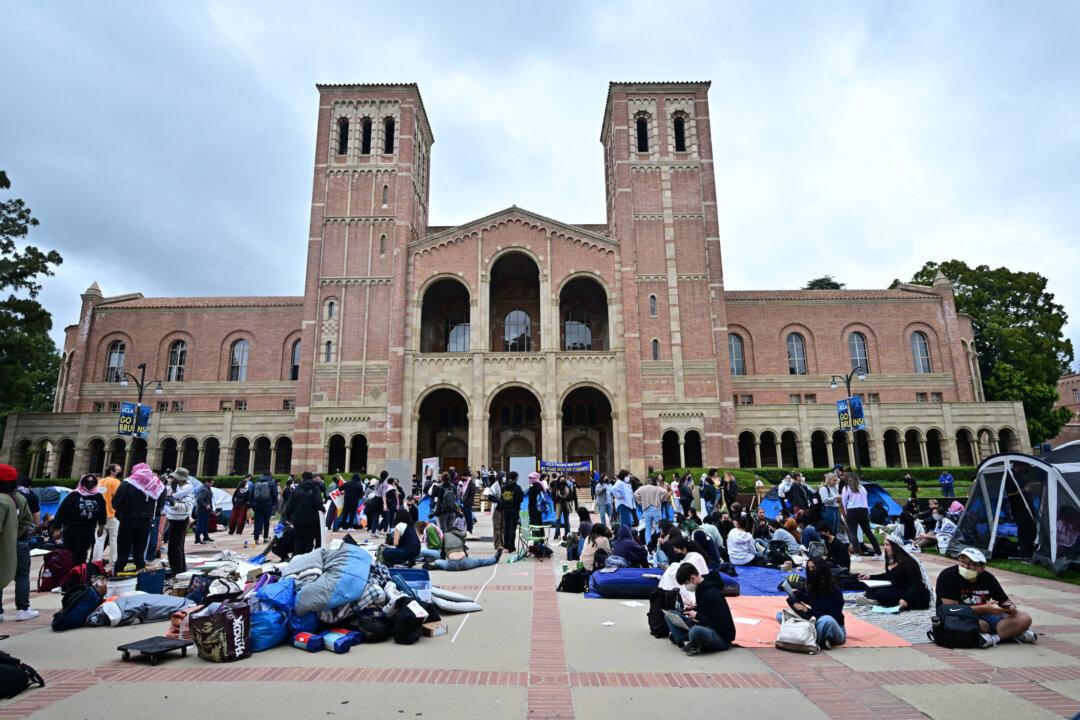LOS ANGELES—The Board of Supervisors held its first public hearing May 19 on Los Angeles County’s $36.2 billion recommended budget for fiscal year 2021-22—a plan that emphasizes spending to expand safety-net services, support economic recovery and address racial and other inequities.
County chief executive Fesia Davenport updated the board during a session that in other years has drawn hundreds of union members and advocates for a wide range of county programs and initiatives, all fighting to shape the budget and get their share, but this year was held virtually due to the coronavirus pandemic.
The public comment period lasted an hour and people were given two minutes to address the board.
Davenport framed this budget as pivotal for the county, saying it has the opportunity for “once-in-a-generation transformative change,” based in part on new levels of federal and state funding.
“We are positioned like never before to comprehensively address so many of our longstanding barriers that have held back individuals and communities for generations: things like institutional racism, barriers to housing and jobs, the digital divide, environmental equity and, of course, justice system reform,” she said. “My goal is for the county to come out of this pandemic better than before.”
Spending Priorities
Supervisor Hilda Solis spoke directly to taxpayers who might disagree with the board’s spending priorities.“We need to stop criminalizing poverty and mental illness,” Solis said. “For those who ask why the county should pay for these services, I would ask: who do you think is paying for our jails, our [juvenile] camps and halls right now? It is you, the taxpayers.”
Of the overall budget, 33 percent is recommended to fund health programs, 26 percent for public assistance, 25 percent for public protection and 16 percent to cover other costs, including recreation and culture.
Major adjustments are expected before the budget is ultimately finalized in October, though no changes or action were taken May 19. For example, the latest version of the budget does not yet include roughly $1.9 billion in federal funding expected to flow to the county from the most recent coronavirus relief package or any funding from the infrastructure plan currently being negotiated in Washington, D.C.
Roughly 40 percent of the county’s total budget comes from federal and state funding.
Davenport said she will present her office’s recommendations for allocating the latest approved round of federal relief in early June and then incorporate expectations for state funding on June 28.
Measure J
One budget item that many advocates are pushing to increase is the county’s commitment to Measure J, a requirement that at least 10 percent of locally generated, unrestricted funds be invested annually in community programs and alternatives to incarceration, with a three-year ramp-up period.Davenport earmarked $100 million in spending on Measure J as a “year-one down payment” on the county’s promise to address racial injustice, which she said “represents the single largest allocation for a new program in the recommended budget.”
That number does not go far enough to satisfy some community advocates. Representatives of several organizations that backed Measure J issued an April statement “rejecting” the chief executive’s proposal and arguing that the full allotment should be as high as $900 million.
Davenport took pains May 19 to explain the complexities involved in calculating the restricted fund balance, but made clear that such a big number had never been on the table. A back-of-the-envelope, very rough calculation offered by the last chief executive during the earliest conversations about Measure J was $360 million, the chief executive reminded the board.
“While I cannot commit at this time that additional funding will be identified for the down payment,” Davenport said. “We are doing everything we possibly can to identify additional funding while balancing other priorities.”
The sheriff’s department budget is another bone of contention. It is recommended to remain roughly flat to the prior year, at $3.4 billion, which has generated pushback from those who have called for shifting more dollars from law enforcement to community-based services and programs.
Supervisor Holly Mitchell asked the chief executive in April to “continue to look for opportunities to cull out inefficiencies and waste in the Sheriff’s Department” to create a department “better designed to meet the actual needs of our residents.”
Sheriff Alex Villanueva has argued that the board is starving his department of funding and hurting communities of color in the process.
During the May 19 hearing, he told the board that the proposed county budget does nothing to address “existential threats to the community,” including homelessness, rising crime, arsons and illegal cannabis dispensaries.

Help for the Homeless
Addressing the growing problem of homelessness, exacerbated by the pandemic, remains a central concern for the board. Highlighted spending includes a total of $426.7 million in Measure H funding, which includes an additional $16.6 million to increase the stock of interim housing and motel vouchers as well as more supportive housing services.In her slide presentation to the board, the chief executive fired a warning shot in connection with the lawsuit filed against the county and the city of Los Angeles by the L.A. Alliance for Human Rights.
The judge’s order, currently under appeal, for the county and city to offer housing to every homeless individual on downtown’s Skid Row by October could cost the county $448 million and result in nearly 2,000 layoffs, according to one slide, though the CEO did not address that note in her comments to the board, instead saying her office was closely watching developments in the case to be prepared for any outcomes.
Supervisor Janice Hahn did call out those estimates, saying she “didn’t necessarily believe” the numbers.
Davenport underscored that the proposed budget builds off a “leaner baseline” of cuts imposed during the current year, including the elimination of more than 2,500 unfilled positions on the books. The county has so far avoided layoffs and isn’t proposing any, but a hard freeze on hiring non-essential personnel remains in place countywide.
She said $145 million in cuts were made in the current year to the sheriff’s department budget— along with eliminating nearly 1,400 unfilled positions—which she said helped support the allocation of $100 million to Measure J for fiscal year 2020-21. The sheriff said his operating budget for this year was cut by another $143 million.
Even with historically high federal and state funding, some departments are facing challenges. Davenport highlighted a drop in federal funding for the Department of Children and Family Services that will result in a $260 million deficit for the county to fill.
Making the Cut
Davenport said in April that departments submitted $2 billion in requests that are not included in the recommendations, but the most critical of those requests—totaling more than $500 million— would be considered during future deliberations.Supervisor Kathryn Barger has consistently pushed for setting aside money for the county’s rainy day fund to prepare for future downturns and emergencies, saying the economic repercussions of the pandemic remain unknown.
“Our situation continues to evolve with the reopening of the economy, and I know that we are being cautious as we move forward,” Barger said. “The demand for services and programs to provide for food, for housing, for public safety, for health care, mental health and quality of life ... remains strong. I think it’s incumbent upon all of us to ensure that the county has the fiscal resolve to continue to provide these essential services for years to come.”
In her latest presentation, Davenport emphasized the board’s commitment to conservative budgeting principles and “living within our means.”
The focus on long-term stability was underscored by big unfunded costs that Davenport suggested needed to be addressed over the next five years, including upgrades to county facilities and legacy technology systems.
Another challenge includes an estimated $40.2 billion in unfunded pension and worker’s compensation liabilities.






Friends Read Free